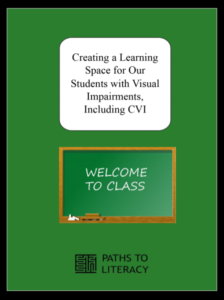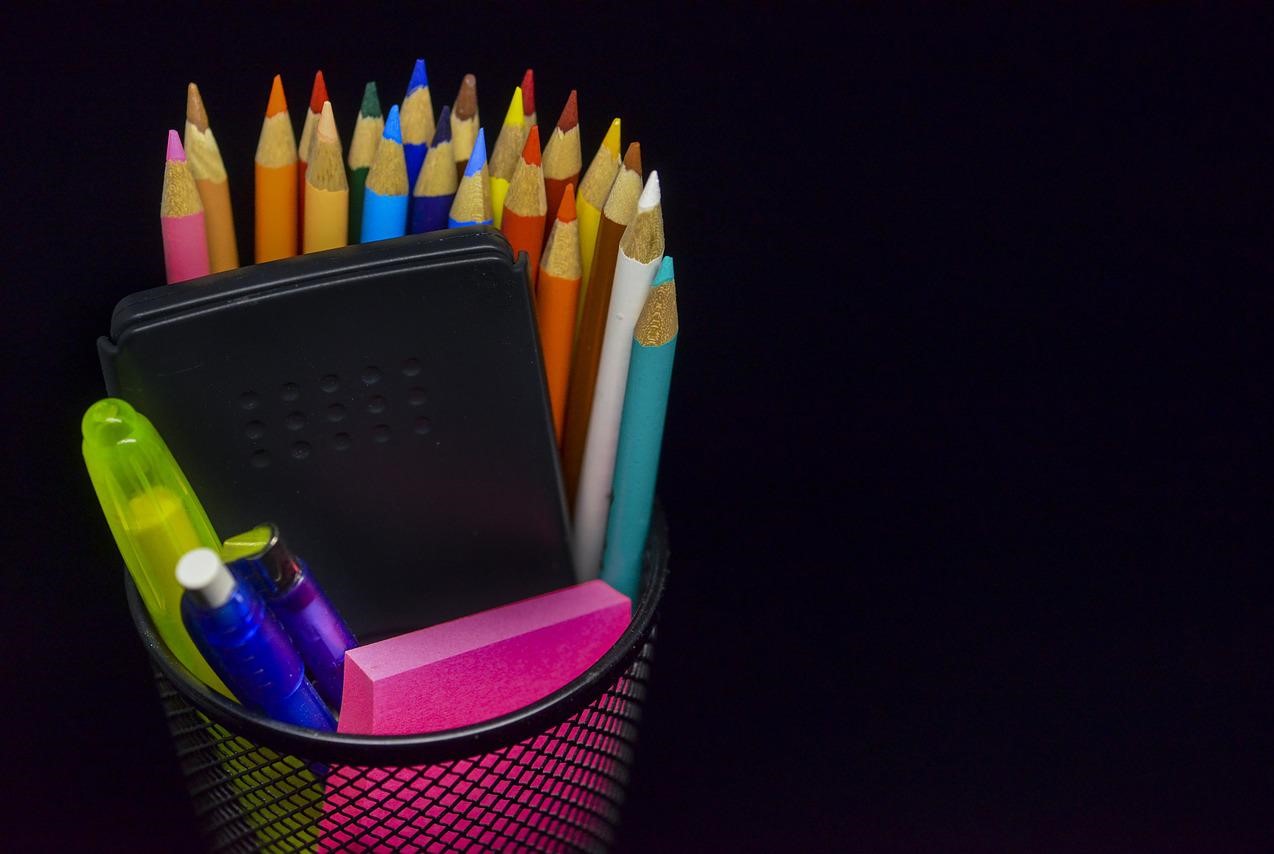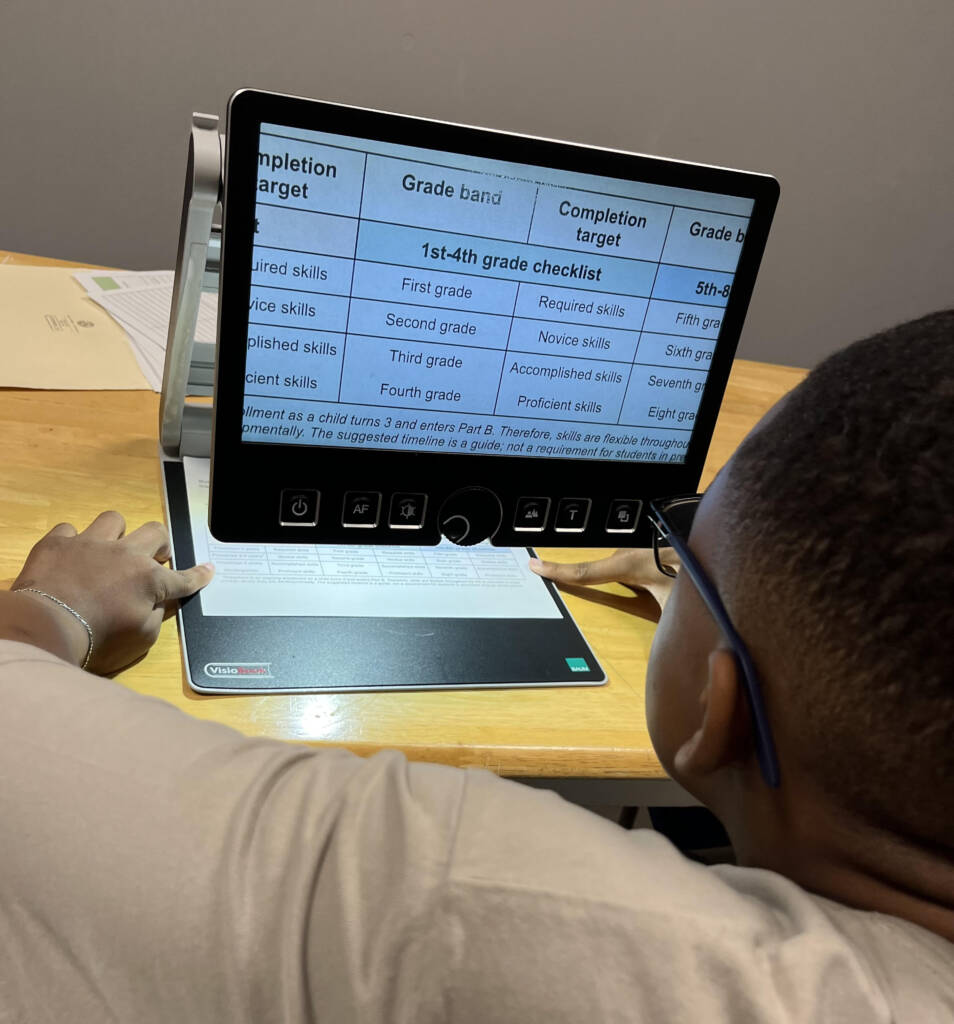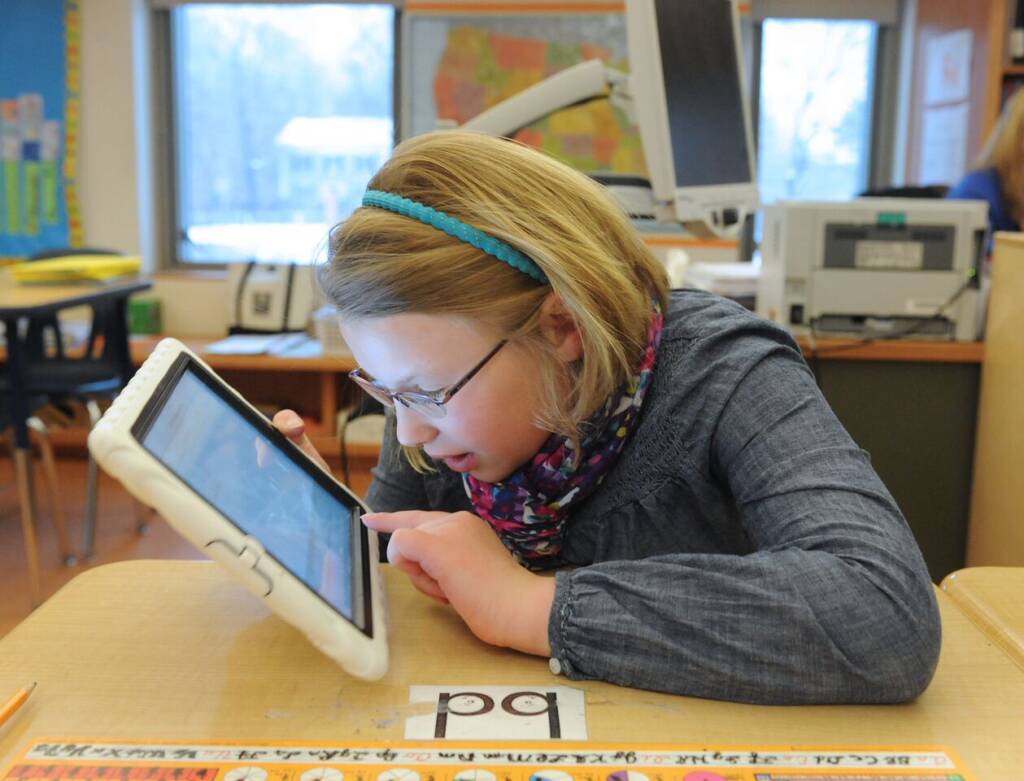When we look at learning spaces we need to consider it with the needs of our students. Often classroom teachers over decorate their rooms in attempt to make it fun and inviting. What often happens is it becomes overstimulating for many. Simple, high contrast, no clutter or patterns, and less items in a room really are the best way to create a place that students feel comfortable.
For our students who are blind, careful consideration must also be in place for arranging and organizing the room. TVIs (Teachers who teach visually impaired students) and O&M (Orientation and Mobility) instructors are key members of the team when making these determinations. We also want to make sure that braille is placed wherever we also put print. For example, when we label areas in the classroom.
Universal Design for Learning
Universal design for learning is an approach that actually started in architecture. UDL focuses on creating strategies that work for a large majority of students. There is a PowerPoint that has been created from an original article if interested in learning more about UDL. This was done when looking at CVI (Cortical/Cerebral Vision Impairments) adaptations.
Using the UDL approach, the teacher can create great work spaces for most in their class.
Here are some ideas:
- Large, simple font
- Furniture stays in centers and not continually moved around
- Use of a black background or solid colors, no patterns
- Take note of lighting overhead and glare which can be issues
- Background music can be distracting
- Have a “quiet area” where students can get the best concentration
- Rugs and flooring should be solid colored without wild/loud patterns
Heavily Decorated Classrooms
Research has shown us that heavily decorated classrooms become a distraction from learning. This short video explains the research.
Itinerant Teachers and Support Staff
If you visit a classroom with students on your caseload, it becomes difficult to come into another teacher’s class and create that ideal environment. It is important to create a working relationship with each other so that the needs for the students are met. Looking at the child’s IEP (Individualized Educational Plan) and their SDIs (Specially Designed Instruction) is a way to discuss how to arrange work centers.
When room is at a premium, it is important to advocate for our students. Sitting on a hallway floor to provide a lesson or support is not going to be a good work environment. Ask where you could have a small space that is quiet when needed.
Keep It Simple
We must always think of our goals and objectives as we create a space that students can learn to the best of their abilities. That can mean allowing time for quiet, individualized work. Educators have focused a lot on group/peer learning but we also need to keep it balanced. Allow for moments of reflection, one-on-one teaching, and brain breaks. For classroom teachers, take a look at your classroom and ask yourself, does this evoke a calm, welcoming learning environment? Ask others to collaborate who have expertise in areas like vision support and learning support. Doing so will allow for better outcomes and a successful year.





